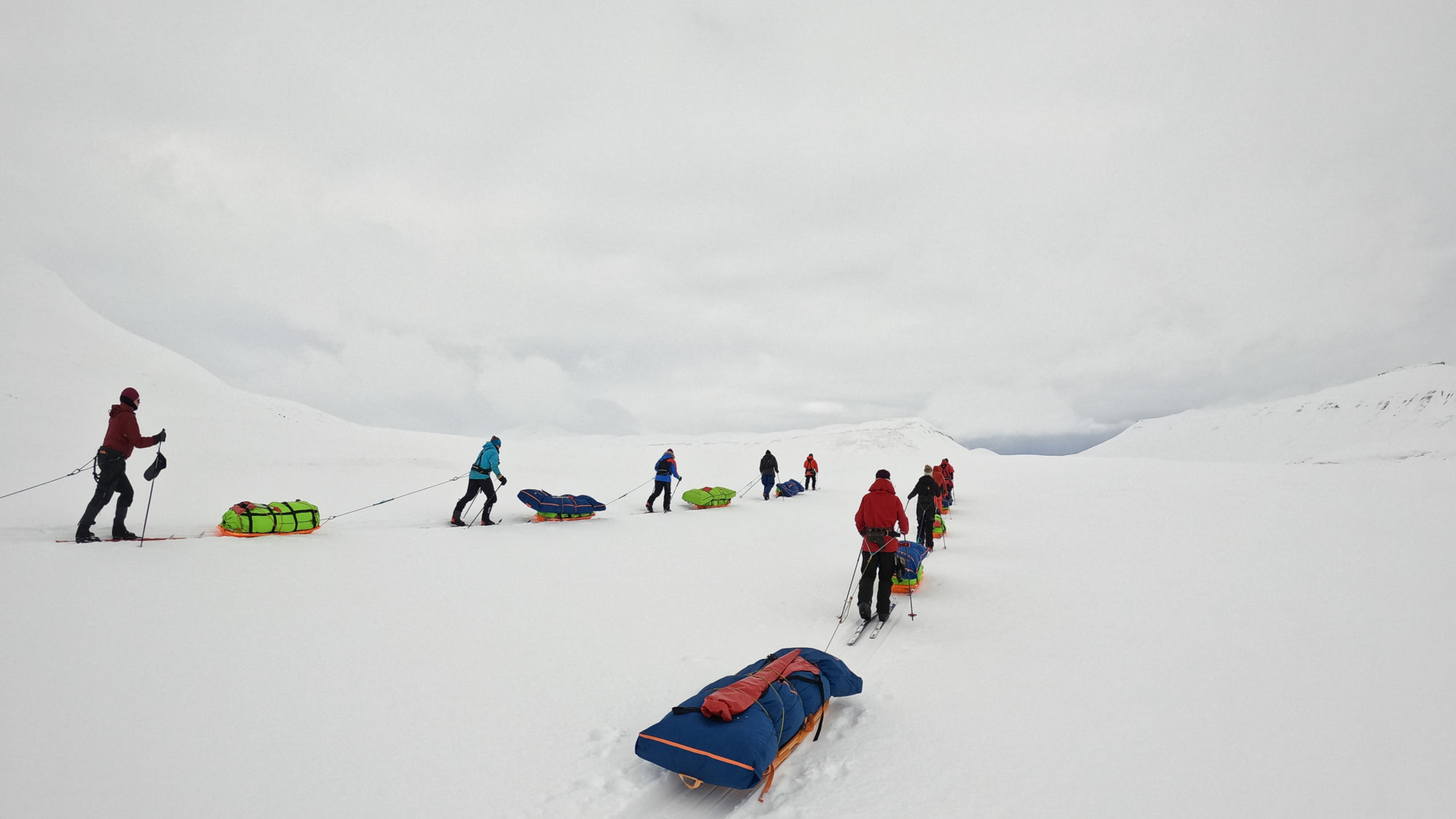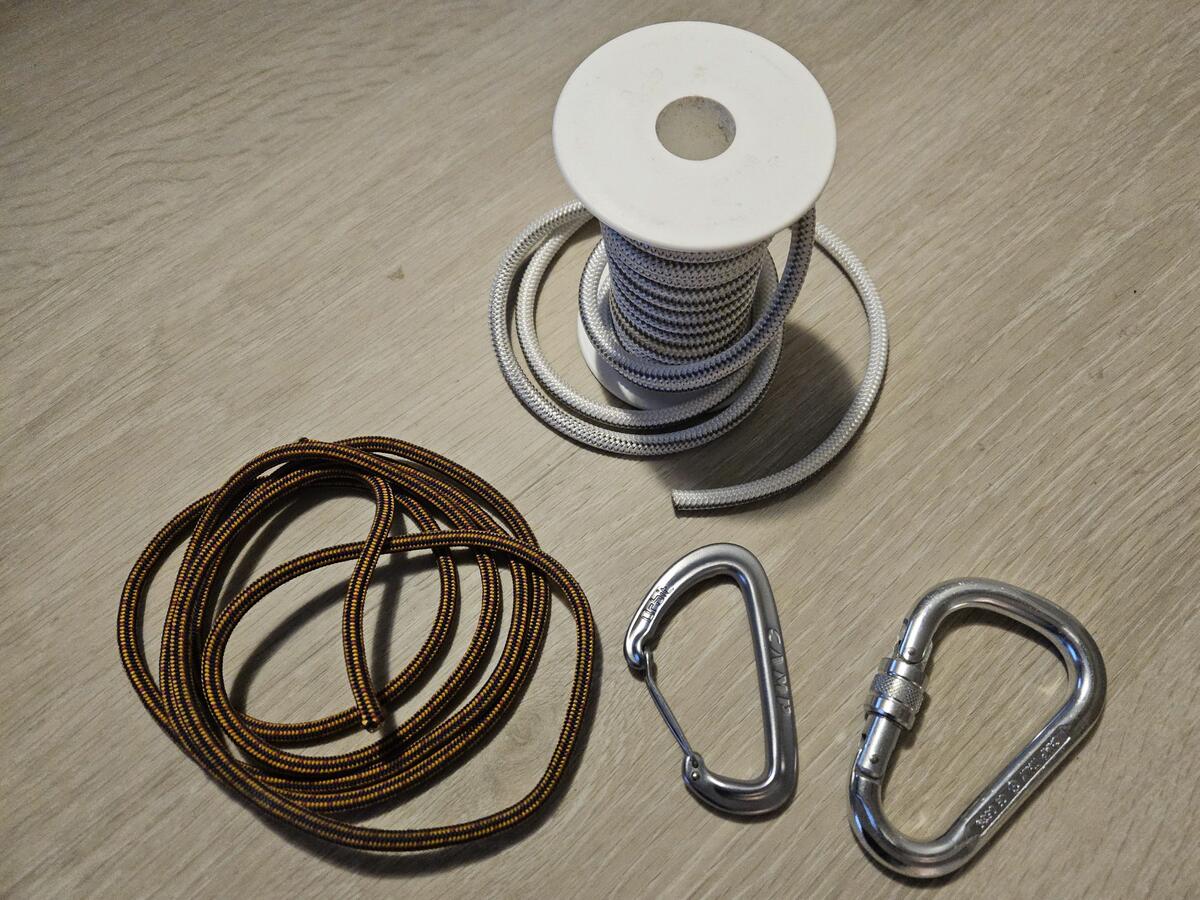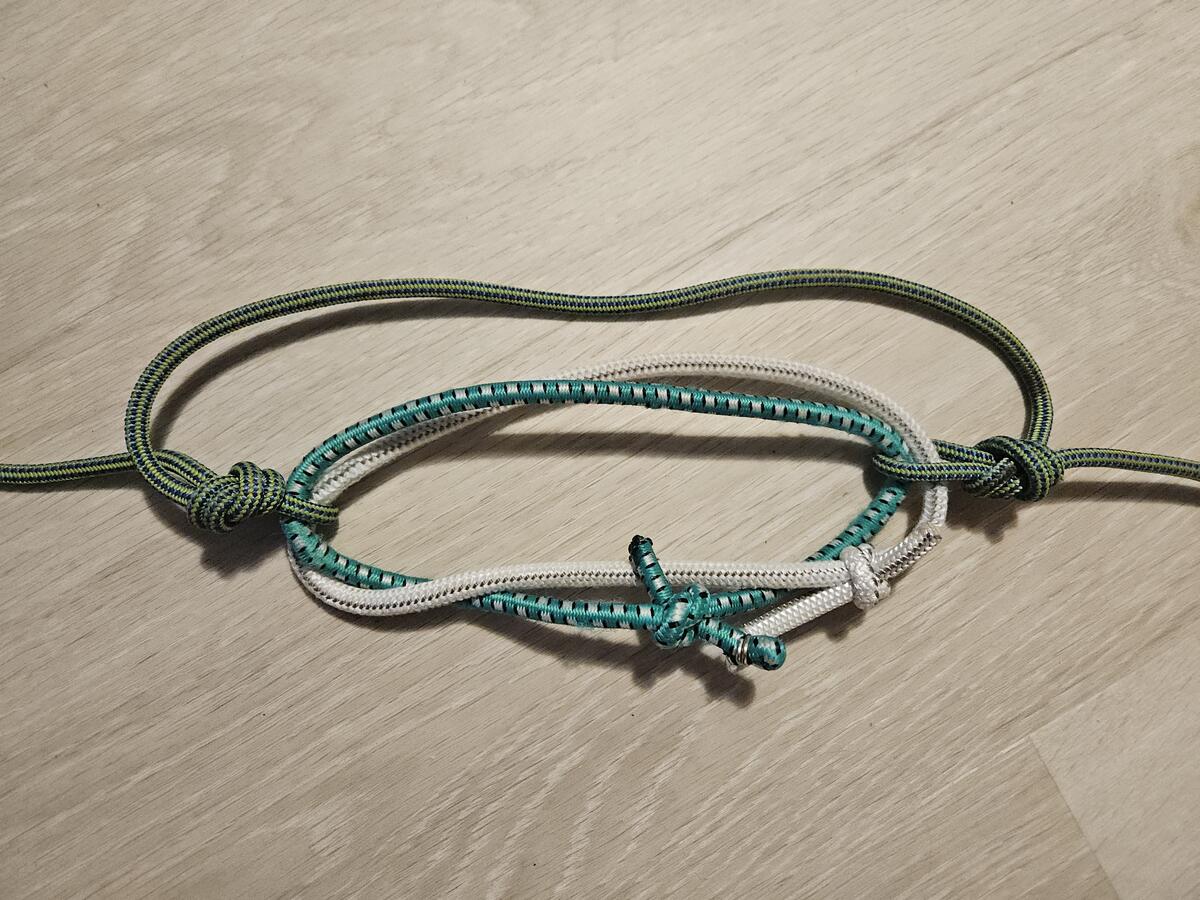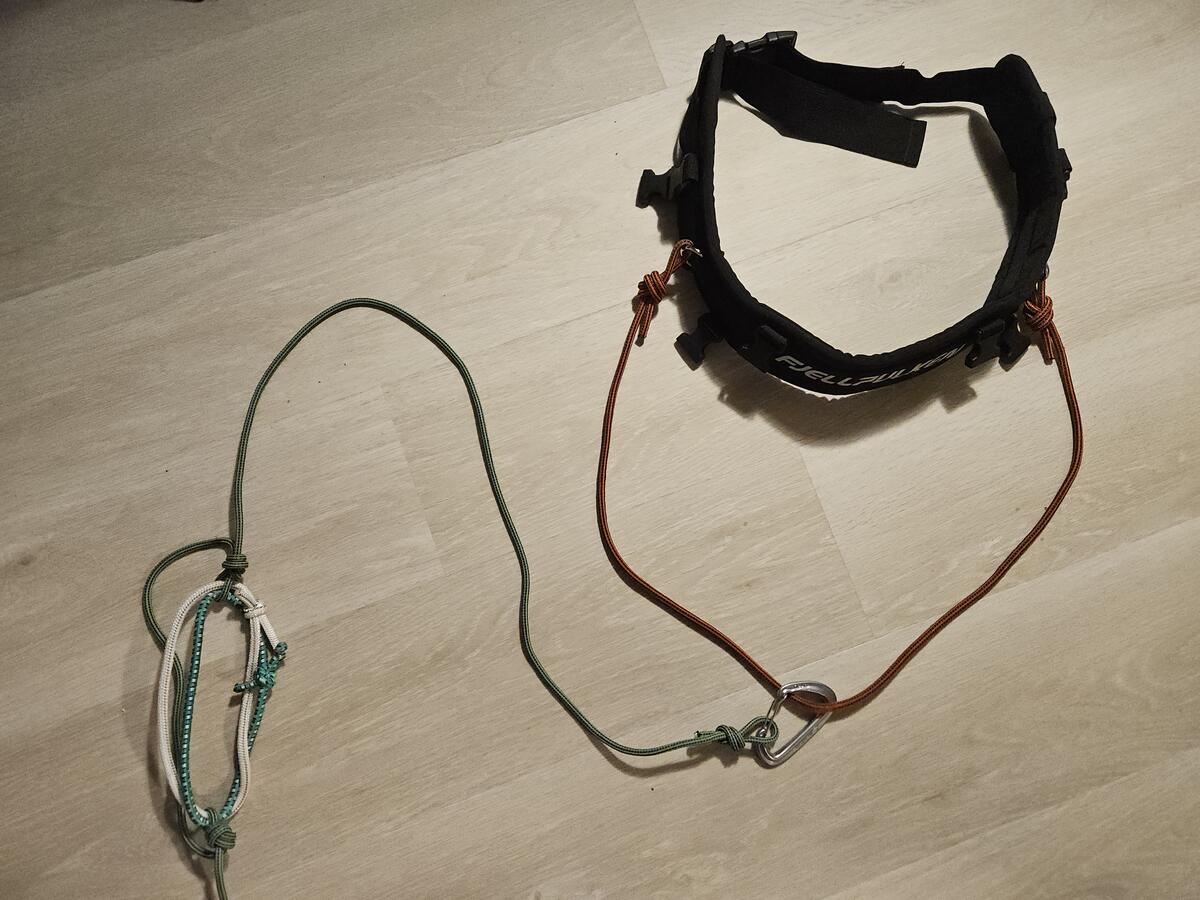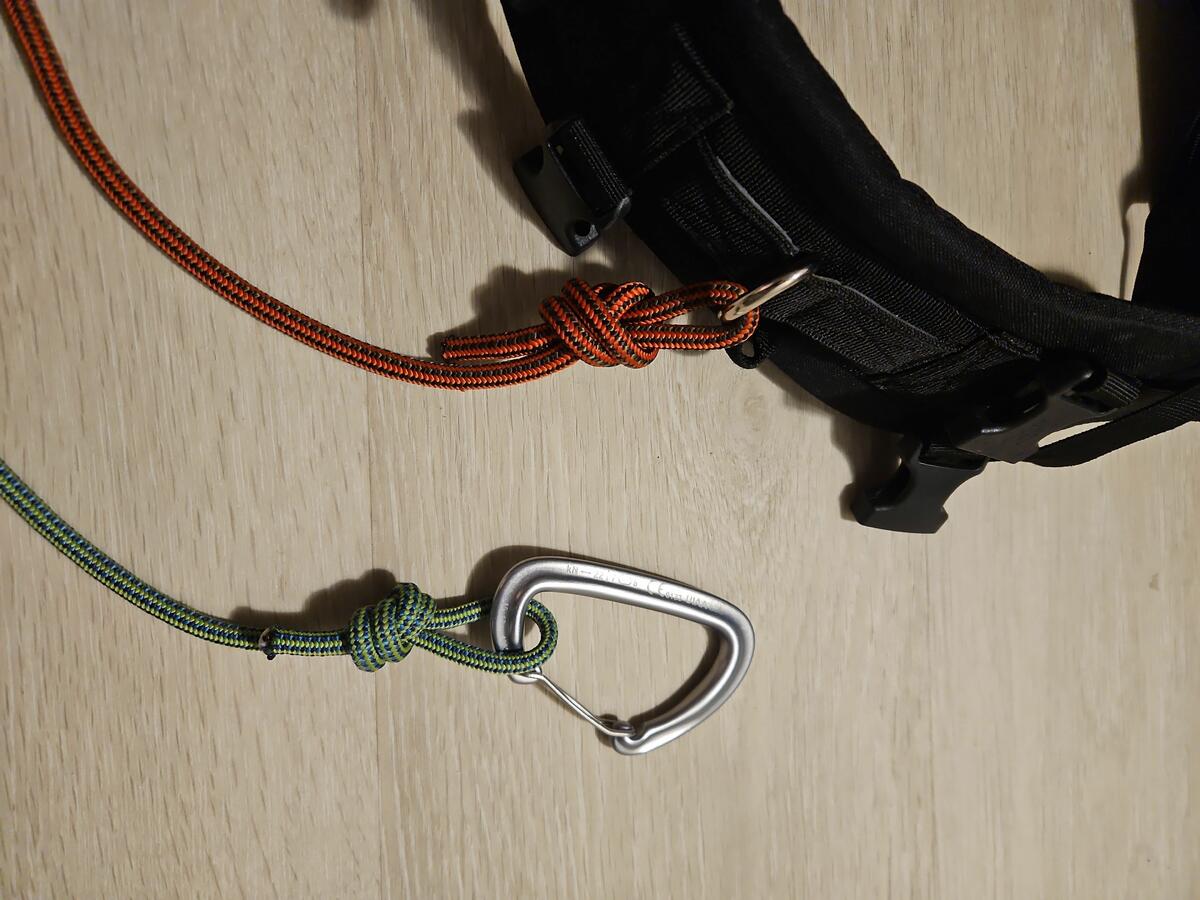A simple rope-pulling system for your sled is easy to make and can reduce strain while easing the load. There are many ways to set this up – one effective and lightweight solution is outlined here for your next adventure.
What you need
Rope: A durable rope, preferably around 6-7 mm/0.24-0.28 inches in diameter. Thickness depends on the weight of the load and the expected wear and tear for the journey. Paracord or climbing accessory cord works well. The length should be about 7 meters/23 feet in total (the thicker the rope, the more length you'll need for the knots).
Shock Absorber: Essential – helps soften the impact and absorb shocks, preventing the force from reaching your body or equipment. It makes pulling much more comfortable than using a static rope. Use a durable bungee cord. For extra stiffness, you can use two cords together. The heavier the sled, the stiffer the bungee cord should be. Length: 50-70 cm/20-28 inches.
Carabiners: Minimum one regualar and one locking carabiner. Aluminium climbing carabiners are the best (light and strong), make sure they are big enough so that you can handle them with mittens on.
Harness: A pulling harness designed for pulling sleds is ideal. If you don’t have one, you can often use a backpack with a sturdy hip belt instead (depends on the activity/tour).
How to make it
Cut a 3-meter/10 feet "pull rope," a 1.5-meter/5 feet "sled rope," and a 2-meter/6.5 feet "harness rope." Remember, the thicker the rope, the more length you’ll need. Make sure the rope ends are "burned"—cutting with a hot knife cutter is the best.
Add the shock absorber on the "pull rope", preferably somewhere in the middle: Make two small loops on the rope, attach the shock absorber between them. The space between the loops should be slightly shorter than the shock absorber, ensuring that the load is never carried entirely by the shock absorber.
Attach the "Harness rope" with carabiners (2 extra) or tie it on the harness/backpack.
Attach the "sled rope" to the sled (or to a tire or two for off-season training). Ensure it’s securely fastened to the two sled's pulling points.
Make a small loop in each end of the "pull rope," and attach the carabiners in each of them. The locking carabiner goes to the "sled rope," and the regular one on the "harness rope" for easy attachment and detachment.
When everything is put togheter, adjust the length on the "pull rope", allow for easy maneuvering while keeping the sled at a safe distance.
Knots: Different knots can be used, but a European Death Knot (also known as an overhand bend knot) is commonly used. It's strong and easy to tie, but note that it can be difficult to untie after heavy loading.
This lightweight, practical setup can improve your efficiency and comfort while traveling through snowy landscapes. Try it out and see how it transforms your sled-pulling experience!
